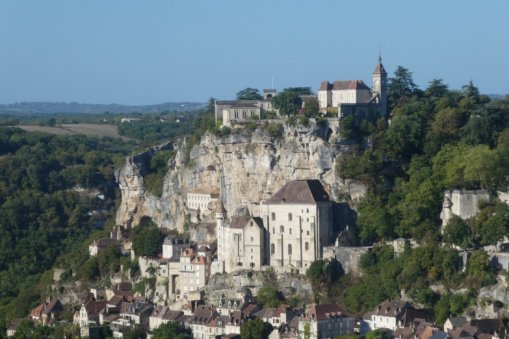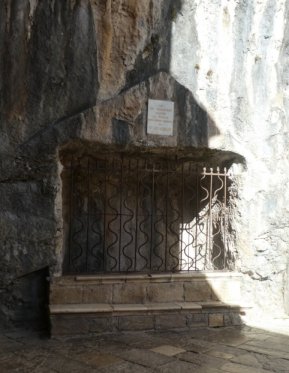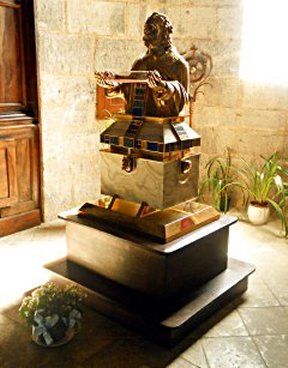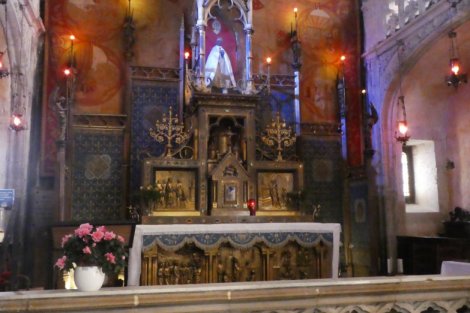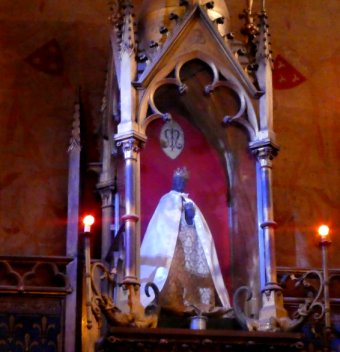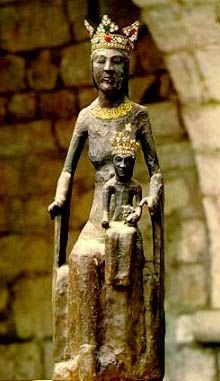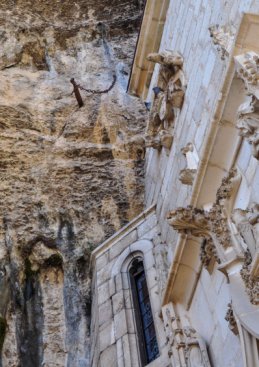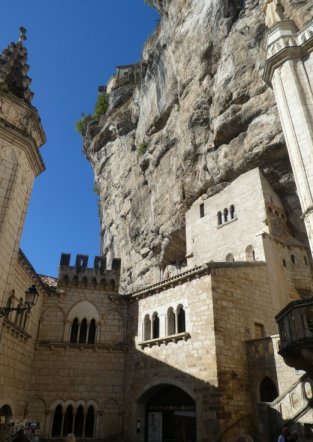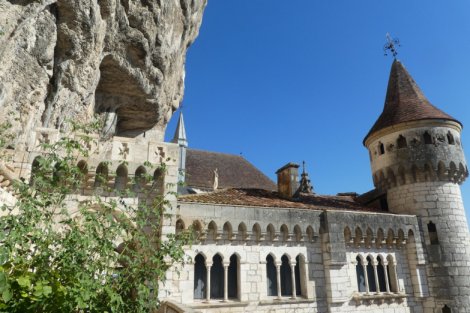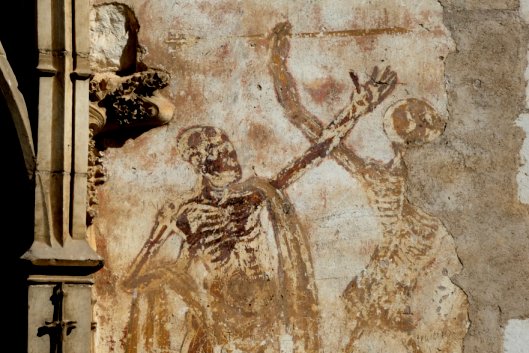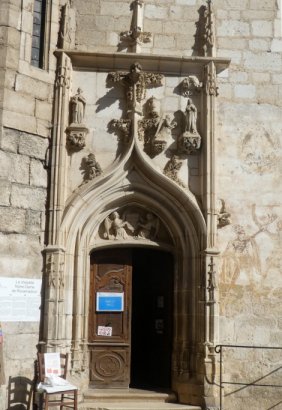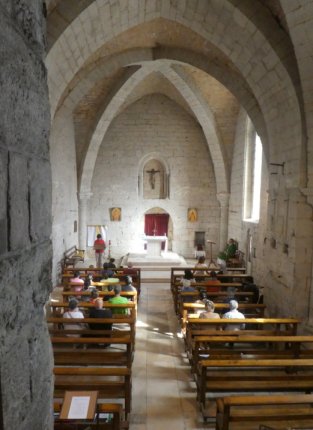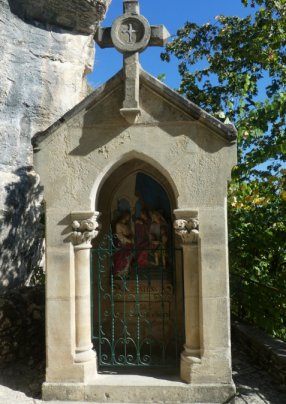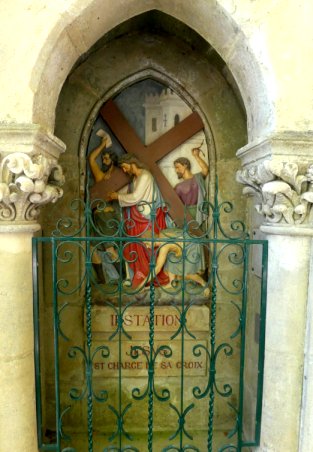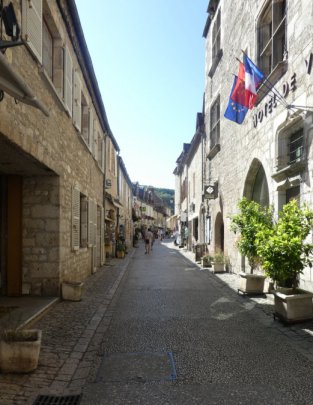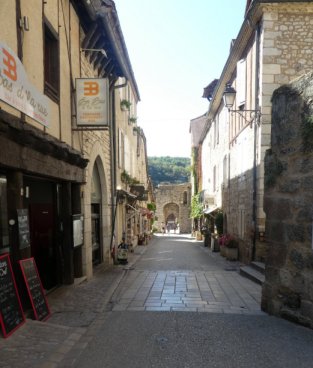|
This is the beautiful small French town of
Rocamadour. It is on the Alzou river, a tributary of the Dordogne.
Rocamadour
is on three levels: the small town on the lowest level, a collection of
shrines and monastic buildings above them, and a chateau at the top. It
has been a pilgrimage destination for centuries, and is on a spur of the
Pilgrimage route known as the Way of St James.
The origins of the sanctuary are described in very ancient and not entirely
convincing legends. It is said that in 1166 a body was found at the
location on the left below. The local Benedictines announced that this was
none other than St Zaccheus, the tax collector mentioned in Luke (19 1 –
10). He was claimed to be the husband of St Veronica, who wiped the face of
Jesus. Following persecution, he and Veronica fled, and were guided to
southern France by an angel. After the death of Veronica, he became a
hermit, known locally as St Amadour. (Rocamadour – the lover of rocks.)
The legend first appeared in the 12th
century, and has been much embroidered since then. Amadour was said to have
visited Rome, and witnessed the martyrdom of Peter and Paul.
On the right below is the the shrine of Amadour,
desecrated by Huguenots but later restored.
|
The main draw for pilgrims was not, and is not,
the shrine, but the statue of the Black Madonna in the chapel of Notre
Dame. It is said to have miraculous properties, resulting in many cures. Here is the chapel and
the Madonna: the statue is currently rather over-dressed, and I have
included a photograph from elsewhere to give an idea of its appearance.
|
|
Black Madonnas are a curious tradition.
There are over a thousand around the world, and many in France. There is
even one in England, in the unlikely location of Willesden, a borough of
London: ‘Our Lady of Willesden’. Why black? In some places, it is to
represent local ethnicity; in other cases, it is the result of the dark
material it was made from, or the accumulation of grime and candle smoke.
The Madonna at Rocamadour is said to have been carved by Amadour himself,
or even by St Luke, who asked him to take it to France. The best guess at
dating puts it to the ninth to the twelfth century.
More views of the shrines, half way up that hill. To reach them
involves climbing over 220 steps, which should be done on your knees.
(They have now installed a lift, and, shamefully, that was the route we
took.) Another curious relic is said to be the sword of Roland, known as
the Durandal. At his death, Roland passed the sword to St Michael, who
hurled it from high up in the Pyrenees. It hit the cliff at Rocamadour, and
can still be seen near the entrance to the Notre Dame chapel.
|
